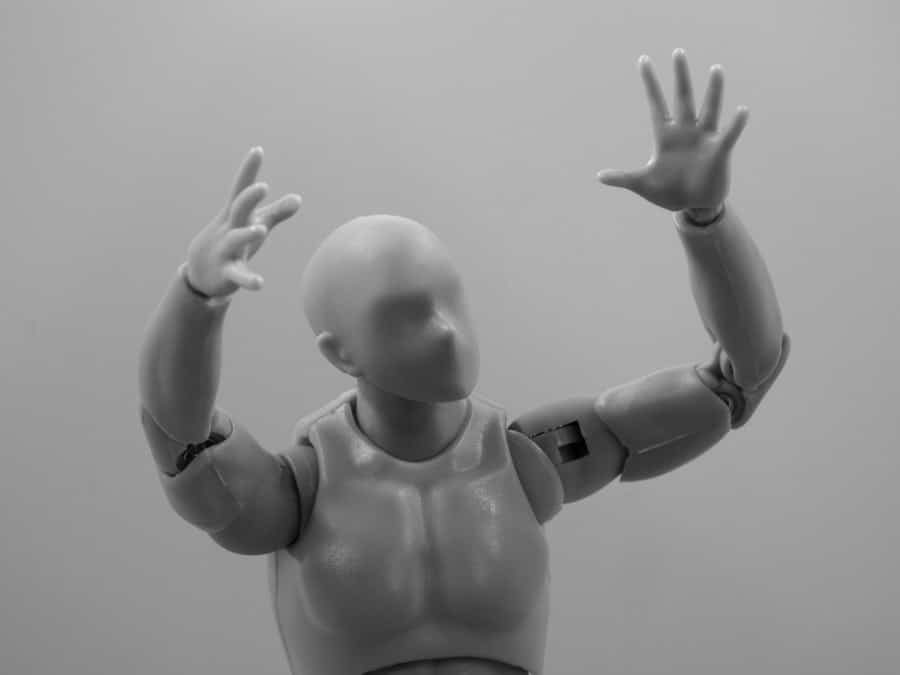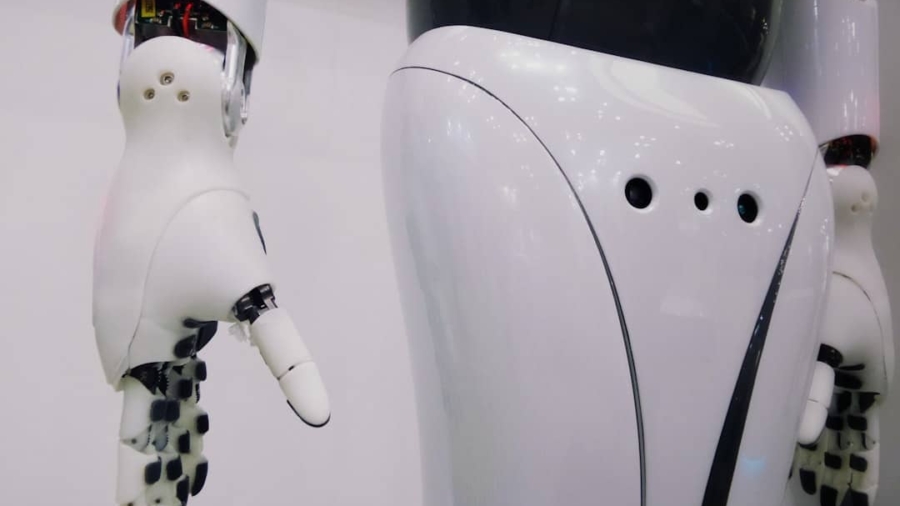The integration of robotic assistance into physical rehabilitation represents a significant evolution in therapeutic practices, merging advanced technology with traditional rehabilitation methods. As the global population ages and the prevalence of chronic conditions rises, the demand for effective rehabilitation solutions has never been more pressing. Robotic systems are designed to enhance the recovery process for individuals suffering from various physical impairments, including those resulting from strokes, spinal cord injuries, and orthopedic surgeries.
By providing precise, repeatable movements and real-time feedback, these robotic devices can facilitate a more efficient and effective rehabilitation experience. Robotic assistance in rehabilitation is not merely about replacing human therapists; rather, it serves as a complementary tool that augments the capabilities of healthcare professionals. The use of robotics allows for personalized therapy regimens that can be adjusted based on the patient’s progress and specific needs.
This technology has the potential to transform rehabilitation practices by making them more accessible, efficient, and tailored to individual recovery trajectories. As we delve deeper into the current applications and advancements in this field, it becomes evident that robotic assistance is poised to redefine the landscape of physical rehabilitation.
Key Takeaways
- Robotic assistance in physical rehabilitation is a growing field that aims to improve patient outcomes and increase access to care.
- Current applications of robotic assistance include gait training, upper limb rehabilitation, and balance training, among others.
- Advancements in robotic technology, such as exoskeletons and virtual reality integration, are enhancing the effectiveness and customization of rehabilitation programs.
- The benefits of robotic assistance in physical rehabilitation include increased intensity of therapy, objective progress tracking, and reduced strain on therapists.
- Challenges and limitations of robotic assistance include cost, limited evidence of long-term effectiveness, and the need for ongoing therapist involvement.
- Future trends and innovations in robotic assistance for physical rehabilitation may include AI integration, home-based systems, and further customization for specific patient needs.
- Ethical and social implications of robotic assistance in physical rehabilitation include concerns about patient autonomy, privacy, and access disparities.
- In conclusion, robotic assistance has the potential to significantly impact the future of physical rehabilitation by improving outcomes, increasing access, and driving innovation in the field.
Current Applications of Robotic Assistance in Physical Rehabilitation
Robotic assistance is currently employed in various rehabilitation settings, ranging from hospitals to outpatient clinics and even home environments. One prominent application is in gait training for patients recovering from neurological conditions such as stroke or traumatic brain injury. Robotic exoskeletons, like the EksoGT and ReWalk, are designed to support and guide patients as they relearn how to walk.
These devices provide the necessary support to maintain balance while allowing for natural movement patterns, which can significantly enhance the learning process. Studies have shown that patients using robotic exoskeletons often experience improved gait speed and endurance compared to traditional rehabilitation methods. Another notable application is in upper limb rehabilitation, where robotic devices such as the ArmeoSpring and the InMotion Arm are utilized to assist patients in regaining mobility and strength in their arms and hands.
These systems often incorporate gamification elements, making therapy more engaging and motivating for patients. For instance, the ArmeoSpring uses a combination of robotic assistance and virtual reality to create an interactive environment where patients can perform tasks that mimic real-life activities. This approach not only aids in physical recovery but also addresses cognitive aspects of rehabilitation by requiring patients to focus on their movements and decision-making processes.
Advancements in Robotic Technology for Physical Rehabilitation

The field of robotic rehabilitation has witnessed remarkable advancements over recent years, driven by innovations in robotics, artificial intelligence, and sensor technology. One significant development is the incorporation of machine learning algorithms that enable robotic systems to adapt to individual patient needs dynamically. These algorithms analyze data collected during therapy sessions, allowing robots to adjust their assistance levels based on real-time performance metrics.
This adaptability ensures that patients receive optimal support throughout their recovery journey, promoting better outcomes. Moreover, advancements in haptic feedback technology have enhanced the interaction between patients and robotic devices. Haptic feedback provides users with tactile sensations that simulate real-world interactions, making therapy more intuitive and effective.
For example, when a patient manipulates an object with a robotic arm equipped with haptic feedback, they can feel resistance or texture, which can significantly improve their motor learning process. This technology not only aids in physical rehabilitation but also enhances the overall patient experience by making therapy feel more natural and engaging.
Benefits of Robotic Assistance in Physical Rehabilitation
The benefits of incorporating robotic assistance into physical rehabilitation are multifaceted and extend beyond mere physical recovery. One of the most significant advantages is the ability to provide consistent and repeatable therapy sessions. Unlike human therapists who may experience fatigue or variability in their approach, robotic systems can deliver uniform treatment protocols that ensure patients receive the same level of care during each session.
This consistency is crucial for tracking progress and making informed adjustments to rehabilitation plans. Additionally, robotic assistance can facilitate increased patient engagement and motivation. Many robotic systems incorporate gamified elements that transform traditional exercises into interactive challenges, encouraging patients to participate actively in their recovery process.
This engagement is particularly important for individuals who may struggle with motivation due to the often tedious nature of rehabilitation exercises.
Challenges and Limitations of Robotic Assistance in Physical Rehabilitation
Despite the promising potential of robotic assistance in physical rehabilitation, several challenges and limitations must be addressed to maximize its effectiveness. One significant hurdle is the high cost associated with advanced robotic systems, which can limit accessibility for many patients and healthcare facilities.
As a result, there is a pressing need for more affordable solutions that can still deliver effective rehabilitation outcomes. Another challenge lies in the integration of robotic systems into existing healthcare workflows. Many rehabilitation professionals may be hesitant to adopt new technologies due to concerns about training requirements or disruptions to established practices.
Ensuring that therapists are adequately trained to use robotic devices effectively is essential for maximizing their benefits. Additionally, there may be resistance from patients who are unfamiliar with robotic technology or who prefer traditional therapeutic approaches. Overcoming these barriers will require ongoing education and support for both healthcare providers and patients.
Future Trends and Innovations in Robotic Assistance for Physical Rehabilitation

Looking ahead, several trends and innovations are likely to shape the future of robotic assistance in physical rehabilitation. One promising direction is the development of more compact and portable robotic devices that can be used in home settings. As telehealth continues to gain traction, there is a growing demand for rehabilitation solutions that can be accessed remotely.
Portable robotic systems could enable patients to continue their therapy at home while receiving guidance from healthcare professionals through virtual platforms. Furthermore, advancements in artificial intelligence will likely play a pivotal role in enhancing the capabilities of robotic rehabilitation systems. AI-driven analytics can provide deeper insights into patient performance, allowing for more personalized treatment plans that adapt over time based on individual progress.
This level of customization could lead to more effective rehabilitation strategies tailored specifically to each patient’s unique needs.
Ethical and Social Implications of Robotic Assistance in Physical Rehabilitation
The rise of robotic assistance in physical rehabilitation also raises important ethical and social considerations that must be addressed as this technology becomes more prevalent. One key concern revolves around patient autonomy and agency during the rehabilitation process. While robotic systems can provide valuable support, it is essential to ensure that patients remain active participants in their recovery rather than passive recipients of care.
Striking a balance between technological assistance and human involvement will be crucial for maintaining patient dignity and empowerment. Additionally, there are implications related to equity and access to care. As previously mentioned, the high cost of advanced robotic systems may exacerbate existing disparities in healthcare access.
It is vital for policymakers and healthcare providers to consider how to make these technologies available to underserved populations who may benefit from them the most. Ensuring equitable access will require innovative funding models, public-private partnerships, and ongoing advocacy efforts.
The Impact of Robotic Assistance on the Future of Physical Rehabilitation
The integration of robotic assistance into physical rehabilitation has already begun to transform therapeutic practices, offering new avenues for recovery that were previously unimaginable. As technology continues to advance, it holds the promise of making rehabilitation more effective, engaging, and accessible for a diverse range of patients. While challenges remain regarding cost, integration into existing workflows, and ethical considerations, the potential benefits far outweigh these obstacles.
As we look toward the future, it is clear that robotic assistance will play an increasingly vital role in shaping the landscape of physical rehabilitation. By harnessing the power of robotics alongside human expertise, we can create a more holistic approach to recovery that empowers patients and enhances their quality of life. The journey toward fully realizing this potential will require collaboration among technologists, healthcare providers, policymakers, and patients themselves—ensuring that the future of rehabilitation is not only innovative but also inclusive and equitable for all.
If you are interested in exploring more about the world of technology, you should check out The Next Web. This website offers valuable insights into various technological advancements, including the future of robotic assistance in physical rehabilitation. Additionally, if you are curious about the latest smartwatch trends, you might want to read Smartwatches Fossil Review 2023. For a broader perspective on the tech sector, Hacker Noon covers a wide range of topics that may interest you.
FAQs
What is robotic assistance in physical rehabilitation?
Robotic assistance in physical rehabilitation refers to the use of robotic devices to aid in the recovery and improvement of physical function in individuals who have experienced injury or disability. These devices can assist with exercises, provide feedback, and support the body during movement.
How does robotic assistance benefit physical rehabilitation?
Robotic assistance can provide consistent and precise support during rehabilitation exercises, allowing for targeted and repetitive movements that can aid in the recovery of strength, flexibility, and coordination. It can also provide real-time feedback to both the patient and the therapist, allowing for more effective and efficient rehabilitation.
What are some examples of robotic devices used in physical rehabilitation?
Examples of robotic devices used in physical rehabilitation include exoskeletons, robotic arms, and robotic gait training systems. These devices can assist with a wide range of activities, including walking, reaching, and lifting, and can be tailored to the specific needs of the individual undergoing rehabilitation.
What are the potential future developments in robotic assistance for physical rehabilitation?
Future developments in robotic assistance for physical rehabilitation may include advancements in artificial intelligence to provide more personalized and adaptive support, the integration of virtual reality to create more engaging rehabilitation experiences, and the development of smaller, more portable robotic devices for use in a wider range of settings. Additionally, there may be increased focus on home-based robotic rehabilitation solutions.

